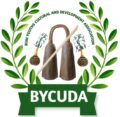Kichako Village
Brief Profile
Kichako Village, situated in Bum Subdivision, was initially settled by migrants from the Banjeh family, known as Kwoti in Fonfuka. This migration occurred post-Second World War during British administration in the region. The settlement process was gradual, with individuals arriving due to various family disputes in Kwoti. Among the earliest settlers were Chia Nana, followed by others like Adamu Meh, Jijing, and Ndongko, who established homesteads in Kifou and later expanded to nearby areas. Nyamjoh Witumi and other descendants of Gwe Nengi also founded their own homesteads in the vicinity. Notably, Muchi Nengi settled one of his wives in lower Kichako, where Sangkwa, his son, was born. Ngong, brother of Chia Nana, settled in lower Kichako while his elder brother resided in Upper Kichako. Additionally, settlers from outside the Kwoti lineage included Kimbi Bala Mbing from Benakimbi Fonfuka, Nji Tata from the Jull dynasty, and others like Fuba Freeboy Mbang and Calaba Ngeh.
Conflict arose during a hunting expedition when a Nkanchi individual inadvertently injured Chia Kuma with a spear, narrowly avoiding tribal warfare due to intervention. However, tensions escalated when Nkanchi settlers outnumbered the Bum people, leading to the forcible seizure of farms and homes. Despite legal proceedings and appeals for assistance, many residents were displaced, seeking refuge in Kwoti or Fonfuka.
Recognizing the distance between Kwoti and Kichako, authorities granted Kichako its own quarter, with Jobam Johanness appointed as the first quarter head in 1979. Over time, leadership passed to Gwe Nguma and later Fonangong Nicodemus. However, challenges persisted, with instances of violence and intimidation from Nkanchi settlers, leading to clashes and imprisonment of community leaders.
Presently, Kichako comprises six quarters, with lower Kichako administratively linked to Misaje Subdivision despite belonging to Bum Subdivision by presidential decree. Upper Kichako remains steadfast in its allegiance to Bum Subdivision, while other quarters have faced displacement, seeking refuge elsewhere. The village, with a population exceeding 300 inhabitants, faces obstacles in participation due to its turbulent history.
Incomplete quarters like Balamua and Kichambo contribute to the complex narrative of Kichako, which continues to navigate challenges of governance and identity amidst a backdrop of historical conflict and displacement.
